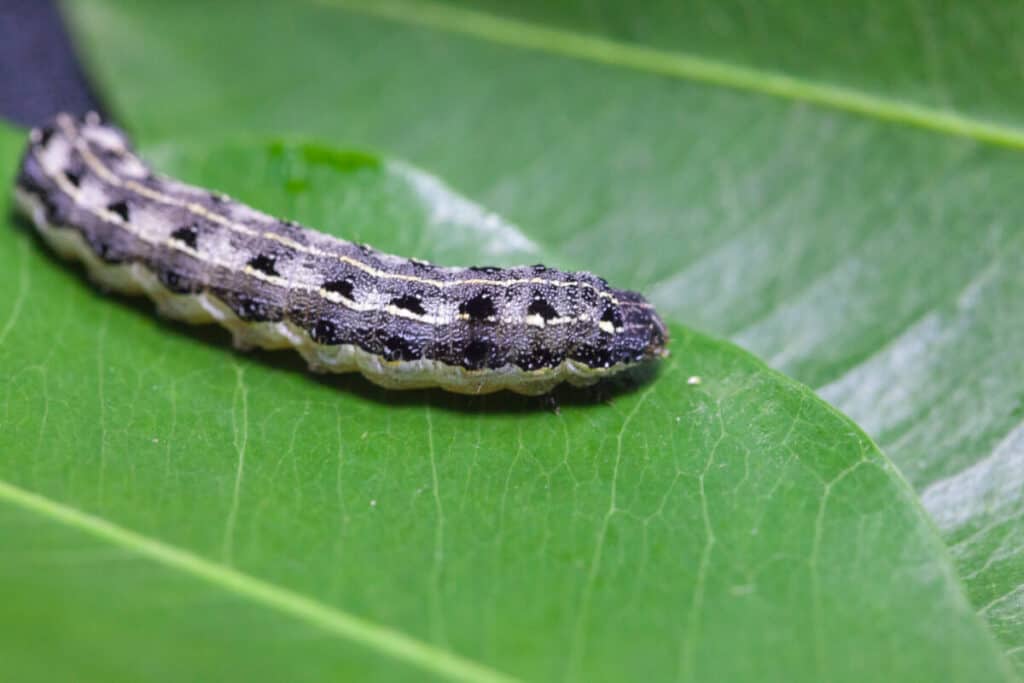Are you tired of dealing with cutworms wreaking havoc in your garden?
Look no further! In this article, we will provide you with all the information you need to identify and control these pesky pests.
We cover everything from their life cycle to how to prevent and manage them.
What are cutworms?
Cutworms, scientifically known as Noctuidae, are a type of moth caterpillar that can cause significant damage to crops and gardens. They’ve a cylindrical body, six true legs, and several pairs of prolegs. Cutworms are nocturnal feeders and can cut down young plants at ground level.
They undergo a complete metamorphosis, with four life stages: egg, larva, pupa, and adult. To control cutworm populations, we can use cultural practices, biological controls, or targeted pesticides.
What damage do cutworms cause on plants?
Cutworms feed on the stems and leaves of young plants at ground level, often cutting them off entirely. This can stunt the growth of new seedlings and reduce overall yields. Cutworms also chew on mature plant foliage and sometimes fruit, leading to further crop loss.
How to identify cutworms on plants

To identify the pest, the initial step is to closely examine the affected plants for any signs of cutworm damage.
Cutworms are most active at night, so look for signs of feeding damage in the morning or early evening. Pay particular attention to young plants and seedlings, as this is where cutworms will first strike.
Look for chew marks on stems and leaves, as well as any frass (insect excrement) left behind. You may also find the caterpillars themselves, which are usually dark.
Read more:
How to get rid of cutworms
Handpick: Using a flashlight, inspect your garden or field at night for cutworms. Handpick the caterpillars and drop them in a bucket of soapy water to kill them. You can also use this method to locate their hiding places during the day and remove them by hand.
Insecticidal soap: Insecticidal soap and neem oil are two effective natural solutions to control cutworms. Spray the plants and soil with these solutions to kill the pests.
Diatomaceous earth: Sprinkle diatomaceous earth around the soil to provide a physical barrier that will deter cutworms from coming.
Bacillus thuringiensis: Bacillus thuringiensis (Bt) is bacteria that produces toxins that are toxic to certain insects, including cutworms. Apply Bt to your plants as a spray or dusting.
Beneficial nematodes: Beneficial nematodes are microscopic worms that parasitize cutworms and other pests. Apply beneficial nematodes to the soil around your plants for an effective natural solution to controlling cutworm populations.
Read more:
- Insecticidal Soap vs Dish Soap for Pest Control
- How To Stop Insects Eating Plant Leaves
- How To Use Diatomaceous Earth In Potted Plants
How to prevent cutworms on plants
Clean up debris: Remove weeds and debris from around your garden or field to reduce potential hiding places for cutworm larvae. This will also help reduce the number of adult moths that find their way to your plants.
Rotate crops: Planting the same crop in the same location every year can lead to an increase in cutworm populations. To avoid this, rotate crops each season so that new plants are not always exposed to the same pest pressure.
Use screens or row covers: Screens and row covers can physically block adult moths from laying eggs on your plants. Make sure they are secured at all times so no pests can get through.
Monitor regularly: Regularly inspect your garden or field for signs of cutworm activity, such as egg clusters or frass left behind by caterpillars feeding at night. If you spot any activity, take immediate action before it becomes a larger problem.
Use empty toilet roll tubes to protect seedlings: Cut empty toilet roll tubes in half and place them around young plants or seedlings to prevent cutworm larvae from reaching and damaging the foliage. Remove the tubes once the plants have grown large enough.
Host vegetable plants for cutworms
Cutworms are commonly found on vegetable plants such as tomatoes, peppers, and eggplants. They may also feed on other types of vegetables, such as onions, potatoes, cabbage, carrots, celery, and squash.
Natural predators of scale
The natural predators of cutworms include birds, snakes, spiders, wasps, and beetles. These predators can help control cutworm populations in your garden.
References
- https://en.wikipedia.org/wiki/Cutworm
- https://extension.umn.edu/yard-and-garden-insects/cutworms
- https://ipm.ucanr.edu/agriculture/cucurbits/cutworms/

Fact Checked, Written, and Published by Kevin Rodrigues
Kevin is the founder of Gardening Mentor, a website that aims to teach people to grow their own food in a limited space. As a self-taught gardener, Kevin has spent several years growing plants and creating gardening content on the website. He is certified in Home Horticulture and Organic Gardening from Oregon State University. He has a Post Graduate Diploma in Horticulture and Landscape Gardening from Mumbai University.
Read more
